- Packed with innovative technology
- Great to drive
- Practical space for passengers and cargo
- Merely good range
- Not cheap
- No panoramic roof option in UK
Range (WLTP): 238-298 miles Top Speed: 115 mph 0 to 62: 5.2-8.5 sec Cost/Mile (@14p/kWh): 3.4-3.8p
Introduction
The IONIQ 5 has garnered almost as much excitement as a new release from Tesla. Not only is this the first product from Hyundai’s spun-off electric-only IONIQ brand, but it’s also packed with technology. It’s based on a pure-electric platform called E-GMP, which Kia is also using in its EV6, with more models to come. That means this is an electric car with no compromises to accommodate fossil fuel variants. Some reviewers are even saying this could be a true Tesla competitor. That might be a bit of a cliché, but there is plenty to be excited about with this car.
Price and Options
There are quite a few variants of the IONIQ 5 to choose from, including two battery sizes, three motor powers, and three trim levels, although not all combinations are possible. There are rear-wheel-drive 2WD versions with 58kWh or 72.6kWh batteries plus 170PS and 217PS motors respectively, or an AWD option with the larger battery only and 305PS from dual motors.

Hyundai has kept the same trim names as its other cars such as the Kona Electric, including SE Connect, which is only available with the 58kWh battery, as well as Premium and Ultimate, which you can choose with all three battery and motor combinations. There's over £11,000 separating the SE Connect from the AWD Premium version we were sent for review.
As with most Korean cars, the specification is generous for every trim, though. The SE Connect still comes twin 12.3in displays, one for the infotainment system and one for the dashboard display. It has 19in alloy wheels, comprehensive safety features, rear parking sensors plus camera, and adaptive cruise control.

The Premium trim adds a few more safety features, electric driver seat adjustment, heated front seats, front parking sensors and an electric tailgate. The Ultimate we were sent to review adds 20in wheels for the 72.6kWh versions, BOSE premium audio, electric adjustments for the passenger seat, heated rear seats, a head-up display, ventilated front seats and the vehicle-to-load (V2L) ability we will be explaining later.
The basic colour is olive green, but there are eight other options ranging in price from £300 to £685, with the latter being for a matte finish. They're all quite sober and dark, apart from the £300 solid white of our review car.

The looks and technology of the IONIQ 5 are way ahead of previous electric cars from Hyundai, and indeed any other cars from the brand. Unfortunately, this comes for a premium price. Even the entry-level 58kWh SE Connect starts at £36,995, just a few hundred pounds less than the Hyundai Kona Electric Ultimate. The IONIQ 5 Premium starts at £39,295, and the Ultimate at £42,295. The 72.6kWh RWD drivetrain adds £2,650 to the price and the AWD drivetrain £5,850. The top-of-the-range car we drove in Atlas White would cost £48,445, which is only £45 cheaper than a Tesla Model 3 Long Range. But the IONIQ 5 does have some features that might make you consider it over the Tesla.
Exterior Design
The IONIQ 5’s looks are what you’d call “marmite”. Some love the radical, angular appearance, and others argue that it’s a bit too reminiscent of an Austin Maestro (although officially the homage is to the Hyundai Pony of the mid-1970s). We are firmly on the side of liking the IONIQ 5’s design. It has a real sense of occasion and is a confident move by Hyundai. The recessed LED lights at the front provide a mean appearance to the front of the car.
Photos also don’t do the looks or size justice. One of the most surprising things about the IONIQ 5 is that it’s bigger than you think it is. It looks like a hatchback from a distance, and the 19in wheels or larger hide the fact that this is really a crossover SUV. Although it's 14cm shorter than a Tesla Model Y, it's actually 4cm wider and 5mm taller. The dimensions are around the same as an Audi Q4 e-tron, although there's something about the IONIQ 5's styling that makes you think it's smaller than this car.
The keyless entry system is an evolution of previous Hyundai systems. The car detects your proximity and unfurls the wing mirrors electrically, but you need to push a button on the door to unlock and present the handles, which are otherwise flush with the body. This is well executed and works efficiently.
Interior Comfort
Just as the IONIQ 5’s exterior is a radical departure for Hyundai, the interior shows some bold changes from previous cars. There are a few familiar switches, but generally this is a considerable shift in a very high-tech direction. The interior feels spacious and unfussy, albeit not as minimalist as a Tesla Model 3 or Y. The dashboard is dominated by two 12.3in displays, although there are still some physical buttons available.
The seats are quite firm, and their style won’t be to everyone’s taste. The side bolsters are quite pronounced, and if you’re used to proper sports seats or buckets, you will like them a lot. But they are quite hard with lumbar support that won’t suit every driver.
From Premium trim upwards, the driver's seat is electrically adjusted. You can recline all the way back for a nap and extend a foot rest, although that's not a good idea when driving. The front seats are heated from Premium upwards, and the Ultimate adds electric adjustment for the passenger as well as ventilation on both seats.
There is a USB Type A port and car charging plug at the front, above a small cubby. Further back in the centre console is a pair of cupholders and another pair of USB Type A ports, plus a wireless phone charging space. A second space looks like it could be wireless charging for a smaller second phone, but it's more for loose change.
Behind that is a large open space in the centre console with the armrest above, which also opens to reveal another small cubby. Yet another unique feature here is that, with the Ultimate trim, the whole central console can be moved backward and forward. This can allow enough space for the driver or passenger to slide across to the other front seat with ease (with the console further back) or allows more leg room for the rear middle passenger (with the console further forward). In the Premium and SE Connect cars the console is static.
Another unique feature is the sizeable glove compartment, which slides out rather than flipping open. You could, for example, put a cake in it and not worry about squishing the icing when you shut the drawer.
The rear seats are pretty comfy, with a decent amount of knee room and headroom, although not as much as some electric cars we have tested, such as the Audi Q4 e-tron. The middle seat benefits from that extra leg room with the console forward, but if it’s not occupied you can pull the back down to reveal an armrest with a couple of cupholders. One surprise, however, is that there is no panoramic sunroof option, which we would have expected in a premium electric crossover. Apparently it is an option in other regions, just not the UK.
Rear passengers are well catered for with a pair of USB ports in the central console and the two outer passengers have their own air conditioning vents in the door B-pillars. The rear seats can also be moved forward and backward, to increase the space in the boot by a little.
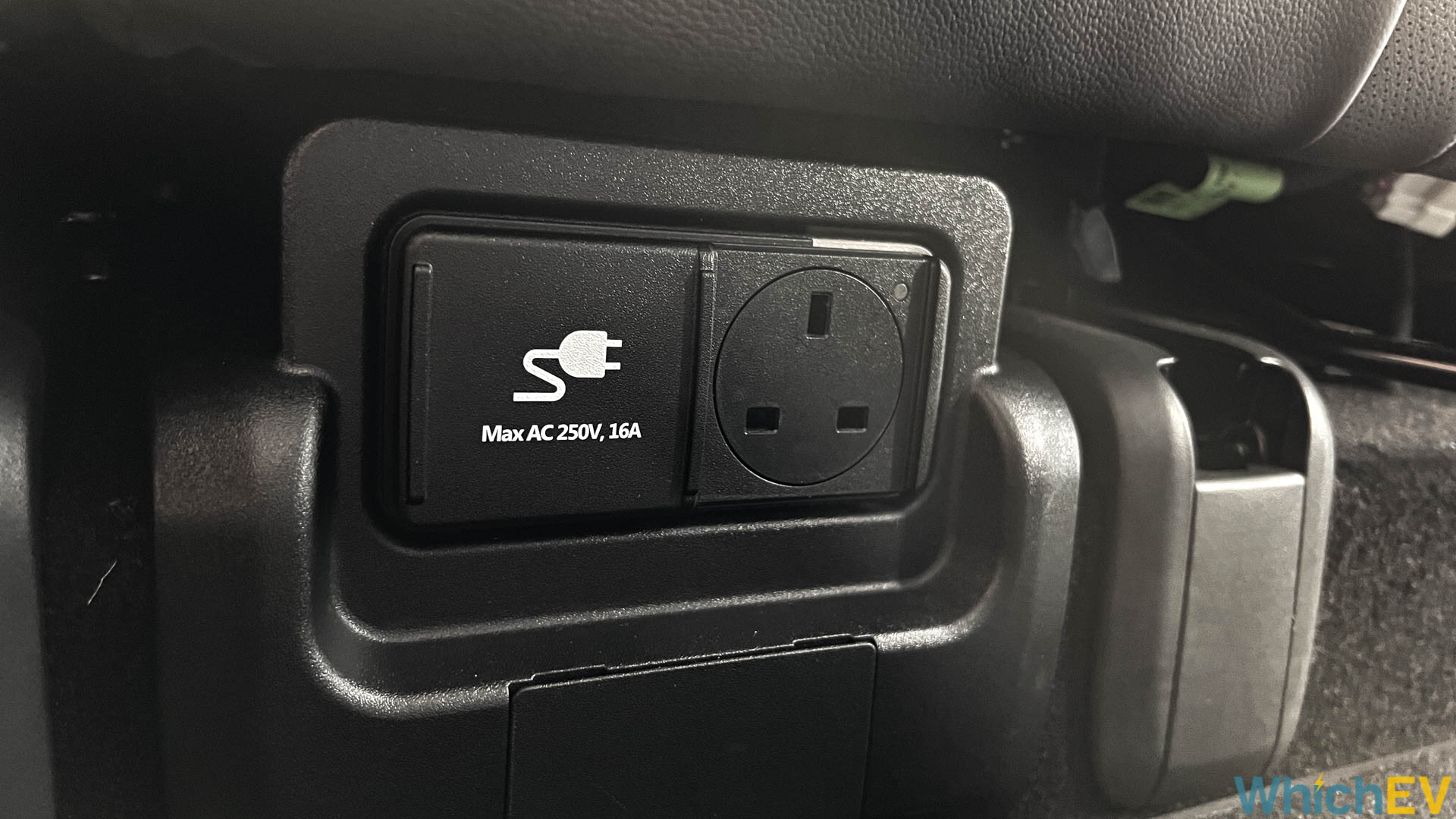
The headline act for rear passengers, though, which only comes with the Ultimate edition, is a 13A plug socket for the V2L system. This resides at foot level beneath the middle seat. You can plug your laptop in here and keep working, or indeed virtually anything. The socket is rated as 250V 16A, which would imply a 4,000W capability, but Hyundai only quotes 3,600W, although even that is beyond the rating of a 13A plug.
The two outer rear seats have ISOfix points, but although the front passenger seat is specified to have this as well, it didn’t appear to in our review car.
Storage and Load Carrying
Interior passenger space is decent, and boot space is generous too. From Premium trim upwards, the boot door is powered. It doesn’t have a kick release, however. With the rear seats up, you get a very handy 527 litres. Under the boot floor is an extra compartment for the tire inflator kit, the granny charger, and with the Ultimate version a mysterious accessory box we will get to shortly.
Drop the rear seats forward and the space expands to a very useful 1,587 litres, with a nice flat floor as well. The seats divide with a 60/40 split but the releases are on the side of the rear seats so not accessible from the rear. The boot capacities with seats up and down are more than an Audi Q4 e-tron and similar to a VW ID.4. But what both these cars lack is a frunk, which the IONIQ 5 has. On the AWD version we tested this is quite small, but it's larger on the RWD models because there's no front motor getting in the way.
The IONIQ 5 has a decent towing rating of 1,600kg too, although a towbar is not a standard optional accessory. Overall, this is a capacious cargo carrier.
The functional but unexciting control system of other electric Hyundai cars has been almost totally replaced. One of the only vestiges remaining is the Start/Stop button to power up the system. Instead of buttons in the central console, a stalk on the steering wheel is used to select drive, reverse, neutral or park. This rotates rather than using up or down motions like a Tesla or Mercedes, although you still push the end for park.

There is still a conventional stalk for windscreen wipers on the right, and another for lights on the left. Paddles are available on either side to manually adjust regeneration level. The steering wheel has voice and media control buttons on the left, with buttons for the adaptive cruise control on the right. Another button that is not on the central console, and instead on the steering wheel, is the one to switch between Eco, Normal and Sport engine powers. If you hold the button down for a few seconds, this enables snow mode, although we didn’t have appropriate weather conditions to test this during our review time.
There's a separate button to enable Auto Hold and an electric parking brake on the dashboard, but you don’t need to use the latter during most driving as park mode will engage it automatically. There's a full set of discrete buttons for the climate control, which is dual zoned on all trim levels and easy to operate while driving. You can obtain further control via the infotainment screen.
The 12.3in display used for the dashboard instrumentation is well designed, with graphical styles that change with engine power mode. It's both aesthetic and has plenty of information. The left has the current speed, and the right has your remaining range. Coolest of all is the way the drive power or regen is shown on the right, with subtle safety warnings on the left. Another superb feature is how a circular window showing a blind spot view appears when you indicate left or right.
With the Ultimate trim, you also get a head-up display (HUD), which is projected right onto the windscreen and includes speed, speed limit, navigation information and very clear safety warnings. Previous Hyundai HUDs have used a plastic screen extending from behind the steering wheel. The IONIQ 5’s system is much slicker.
Of course, there's another 12.3in screen in the middle for navigation and media. This does have a row of physical function buttons underneath but is a touchscreen. The satnav is standard, with three years of live service subscription across all trims. There's a DAB radio and Bluetooth phone connectivity. You get support for Apple Car Play or Android Auto, although this only operates via a wired USB connection, not wirelessly. The settings menu is easily accessed and has plenty of features to adjust the operation of the car.
Performance and Driving
We drove the most powerful AWD version of the IONIQ 5, which has a potent 305 PS. That propels it to 62mph in just 5.2 seconds, which isn't far off the Tesla Model Y Long Range. The 73.6kWh rear-wheel-drive car has 217PS and takes a decent 7.4 seconds to hit 62mph, similar to the VW ID.3 Pro Performance. The 58kWh rear-wheel-drive car has 170PS and hits 62mph in a more pedestrian 8.5 seconds – similar to rear-wheel-drive VW Group SUVs, such as the Skoda Enyaq iV 60 and 80.
We haven't driven the RWD versions of this car, but the AWD one handles extremely well and is lots of fun. Despite its bulk, the IONIQ 5 AWD is very easy and enjoyable to drive enthusiastically. The suspension isn’t particularly hard, and quite forgiving on rougher surfaces, despite the 20in wheels on our car. We also found the size, bulk, and huge wide wheels gave the IONIQ 5 a lot of poise at motorway speeds, inspiring confidence.
While we enjoyed driving the Hyundai Kona Electric, with the 64kWh version doing a passible impression of a hot EV hatch, the IONIQ 5 is in a different league. Yes, it’s a heavier, much larger car, but in AWD guise it can really put the power down and has no torque steer to worry about. The two-wheel-drive cars won’t have this problem either, since drive is to the rear wheels. We suspect their handling characteristics will be good too.
Range and Charging
Considering that the Hyundai Kona Electric offers 300 miles of range and is the longest-range car to still benefit from the UK government plug-in grant, the IONIQ 5’s range is a little disappointing. But only a little. The 58kWh car has a range of 238 miles, while the 2WD Premium with the 72.6kWh battery manages up to 298 miles, depending on trim. The powerful AWD Ultimate model we tested can only deliver 267 miles, which is only slightly better than the much faster Volvo XC40.
But the IONIQ 5 has a considerable advantage when it comes to charging, aided by its cutting-edge 800V subsystem. The onboard AC goes up to 10.5kW, so you can take advantage of three-phase power and fully charge the 72.6kWh car from empty in under eight hours. The 58kWh model will take a little over 6 hours. With a more modest 7kW AC supply, these figures rise to 11.5 and over 9 hours.
Where the 800V system comes into its own is DC charging. With a sufficiently fast DC charger, the IONIQ 5 can go from 10 to 80% in just 18 minutes, which is faster than a dual-motor Tesla Model 3. A year's subscription to IONITY charging is included, so you can take advantage of this fast DC capability, assuming you can find a functioning 350kW unit. We tried the IONITY station in Beaconsfield and it wasn’t operational.
But the IONIQ 5 has another charging related party trick up its sleeve too – it can give as well as receive. With the Ultimate trim, you get Vehicle to Load (V2L). That mysterious pouch in the boot contains an adapter for the Type 2 port, and if you pop the end open you can see a 13-amp plug socket, into which you can connect anything you like. It’s a great feature, although the just-released MG ZS EV Long Range also offers this as an option.
The IONIQ 5 V2L adapter has clearly been designed for European and American plugs where the power cord sticks straight out from the plug, because if the cable is stiff, you can't shut the rain protection cover. But the system works. It can supply up to 3.6kW, and we were able to charge another EV with its granny charger using the V2L adapter. You could also power the compressor for a bouncy castle, inflate a mattress when camping, charge an electric bike, or even run a fridge, kettle, or microwave. The options are endless.
Running Costs
The merely good rather than excellent range means that the IONIQ 5 isn't the most economical EV on the market. While the 58kWh cars can do a decent 4.1 miles per kWh, the AWD we tested provides just 3.7 miles per kWh, which equates to 3.8p per mile on a 14p per kWh supply. Tesla’s cars are considerably more frugal.
Hyundai's warranty for the IONIQ 5 is better than Tesla’s, however, lasting five years for unlimited miles and with a 12-year anti-perforation guarantee. The battery is guaranteed for eight years and 100,000 miles, although no minimum percentage is stated. Insurance groups range from 35 for the Connect SE to 44 for the top model we reviewed, so the IONIQ 5 will be cheaper than a Tesla to insure as well.
Safety
All the Korean cars we have tested have scored highly for safety features, and the IONIQ 5 carries on that tradition. All trims have Hyundai's Highway Driving Assist adaptive cruise control, starting with Level 1 for the SE Connect trim. This includes stop and go for intermittently stationary traffic. There's Intelligent Speed Limit and Lane Keep Assist as standard too.

The Premium trim adds Blind Spot and Forward Collision Avoidance Assist. With the Premium trim and above, the adaptive cruise also includes some steering assistance to make it Level 2. You need to specifically enable this by pressing a button on the steering wheel. It also appears to only be accessible when you’re on a highway that the GPS detects is appropriate. There are lots of nice smaller touches for safety, such as the view that pops up on the dashboard when you indicate. The way blind spot detection warns you is also excellent, particularly with the HUD on the Ultimate edition. Overall, this car is packed with useful safety tech.
| Price: | SE Connect – £36,995; Premium – £39,295; Ultimate – £42,295 |
| Range (WLTP): | 58kWh RWD – 238 miles; 73kWh RWD – 280-298 miles; 73kWh AWD – 267-285 miles |
| Charge time (7.4kW): | 58kWh – 9 hours; 73kWh – 11.5 hours |
| Charge time (50kW, 80%): |
58kWh – 47 minutes; 73kWh – 1 hour |
| Charge time (100kW, 80%): | 18 minutes |
| Battery: | 58kWh; 72.6kWh |
| On Board Charger: | 10.5kW |
| Cost per mile*: | 3.4p-3.8p |
| 0-62mph: | 58kWh RWD – 8.5 seconds; 73kWh RWD – 7.4 seconds; 73kWh AWD – 5.2 seconds |
| Top Speed: | 115mph |
| Power: | 58kWh RWD – 170PS; 73kWh RWD – 217PS; 73kWh AWD – 305PS |
| Wheels driven: | Rear-wheel-drive; All-wheel-drive |
| Cargo: | 527 litres; 1,587 litres with rear seats down; frunk; 1,600kg towing |
*based on electricity costs of 14p per kWh






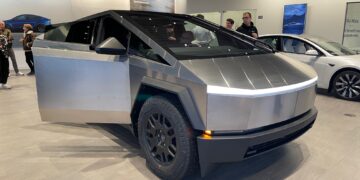


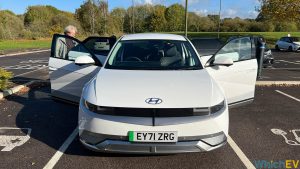


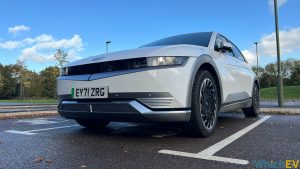







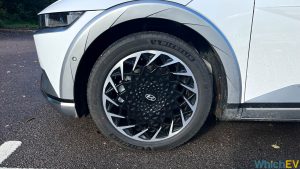
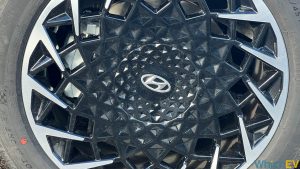
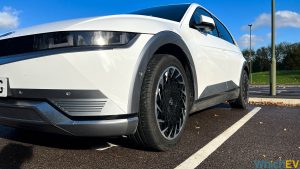








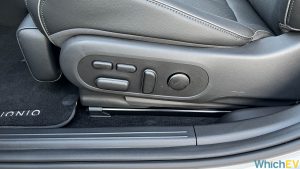


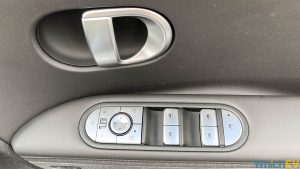


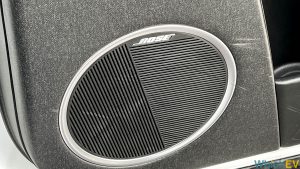

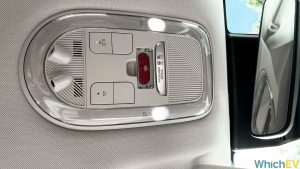
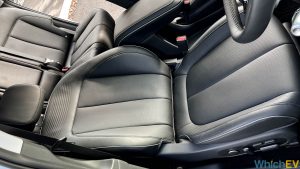


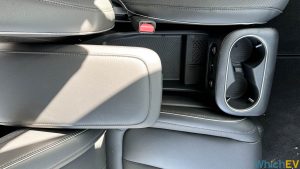
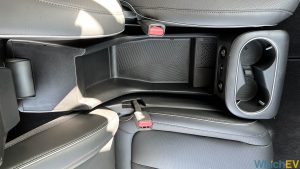


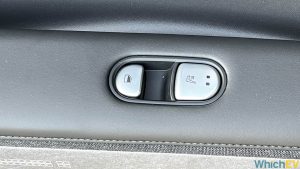
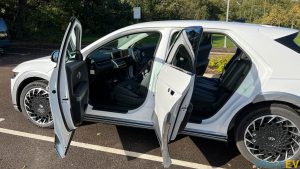



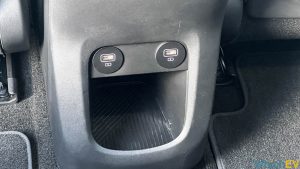





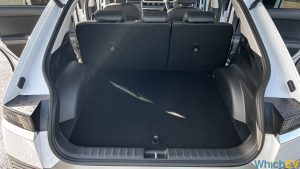
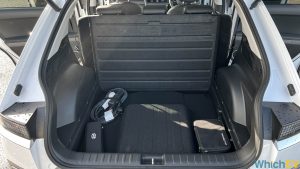
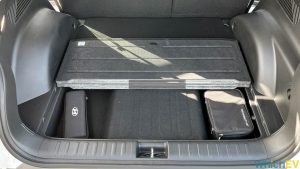

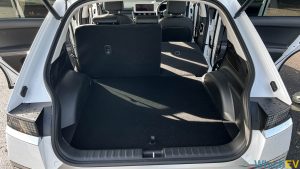
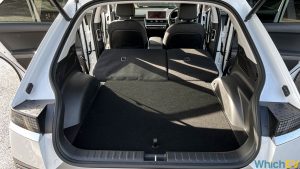



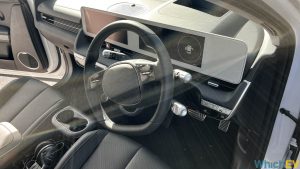


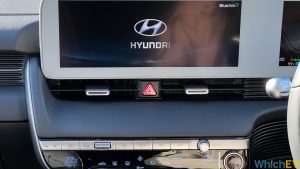

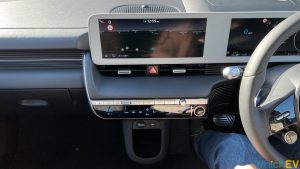


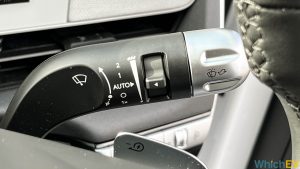


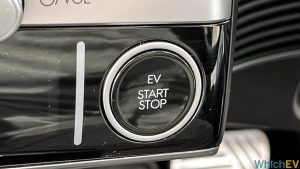
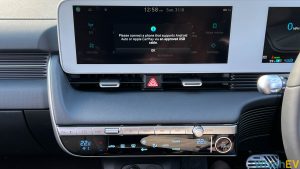
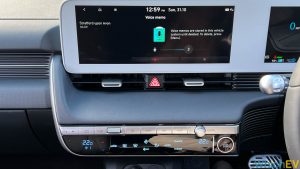
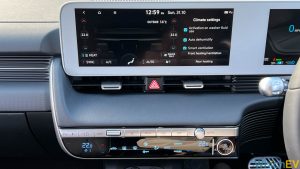

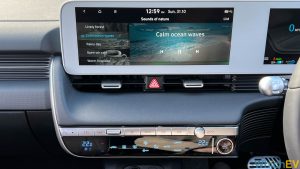
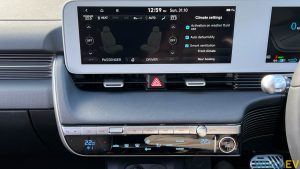



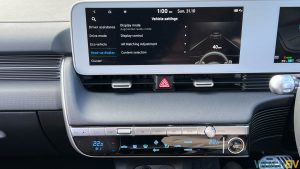

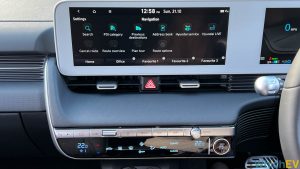

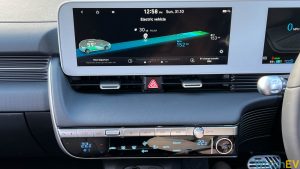





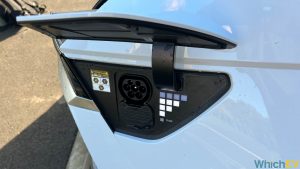
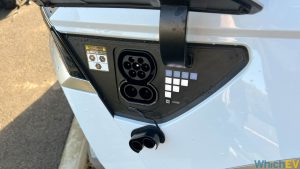



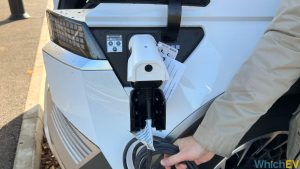










Discussion about this post